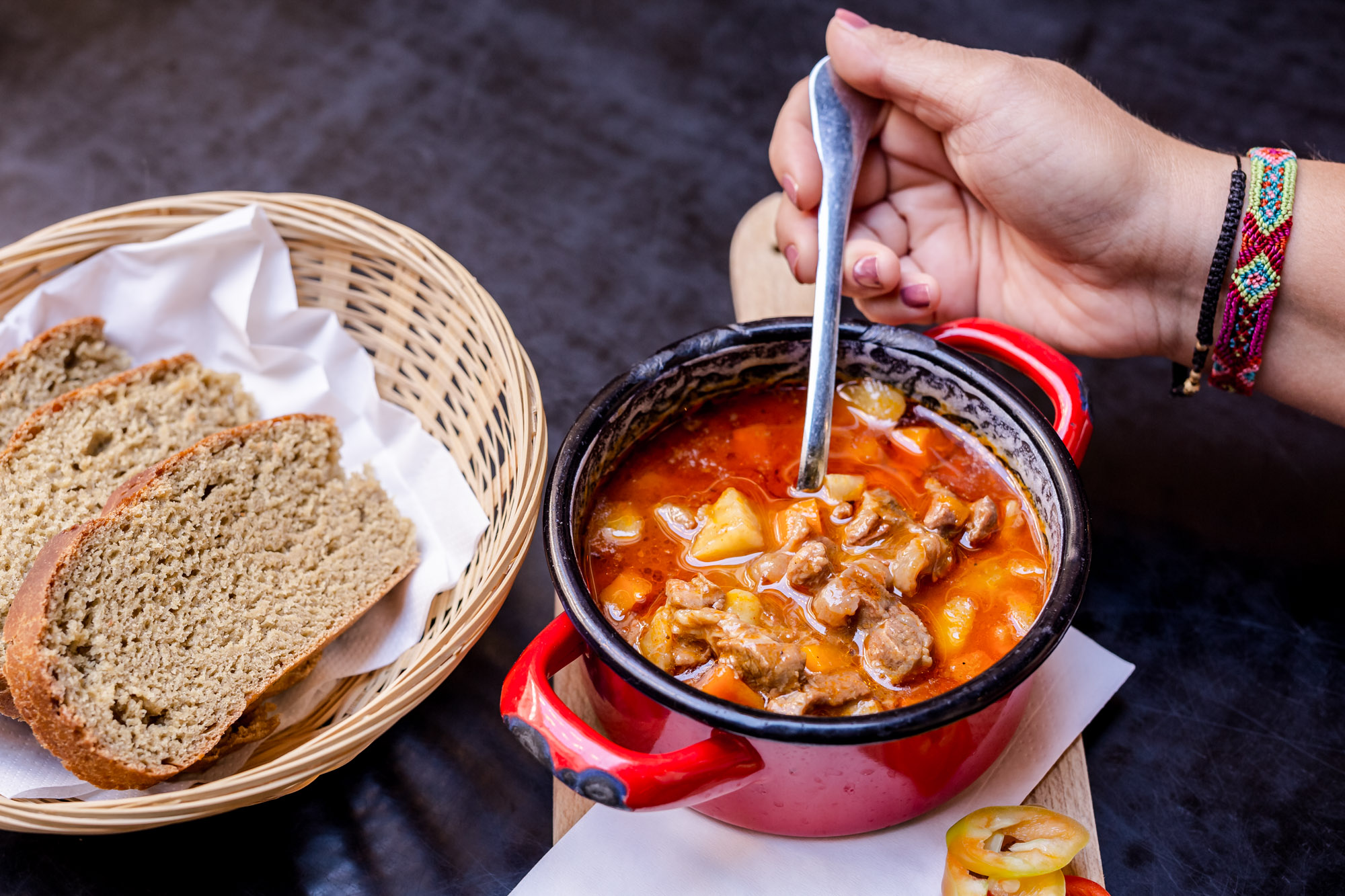
Hungarian gulyás is a soup of meat and vegetables usually seasoned with paprika and originating in medieval Hungary. A symbol of the country, it can be made either as a soup or a stew, and variations can be found throughout Central and Eastern Europe. Often, goulash will be served in a small pot, and can be made spicier to taste with a sauce offered to diners in traditional Hungarian restaurants.
Goulash comes from humble beginnings: cowherds, to be specific. Groups of men would spend months or even a year out on the vast Hungarian plains, cooking in large cauldrons hung over an open fire – echoes of which remain in its modern serving aesthetic. Into the pot went everything available: lard, onions, salt, bacon, and the meat of any cattle which died or was slaughtered. Chili was introduced to the Old World following the discovery of the Americas, and soon the Hungarians were adding this exotic new spice to their stews.

Nobles continued to dine on haute French cuisine, but peasants – resentful of foreign Habsburg rule – began using goulash as a symbol of everything which was good and Hungarian. Paprika flourished in the hot summers of southern Hungary, and a 'noble sweet' paprika strain was eventually adopted by the aristocracy, allowing the humble goulash to climb the social ladder. By the end of the 19th century, goulash and the paprika which spiced it were synonymous with Hungary and Hungarian cuisine.

While Budapest is a culinary mixing pot of all cuisine types, it’s still possible to find a good, traditional goulash in the mix.
Stand 25 Bisztró
Hungarian chefs Tamás Széll and Szabina Szulló prepare mouth-watering dishes at their Buda-based restaurant, only a short hop through the Tunnel from the Chain Bridge. Enjoy the goulash here for 2,900 forints, and check out other menu items including stuffed cabbage, rib-eye steak, grilled aubergine salad and cottage-cheese dessert dumplings. Hungarian wines are also on the menu.
Bestia
On the Pest side, Bestia offers a delicious goulash, served in a small pot, for 2,250 forints. Chef Gábor Krausz spent time working on the west coast of America, but has always remained close to his native Hungarian cuisine. Bestia is located close to St Stephen’s Basilica in the Fifth District, making it a prime, central location.
Gettó Gulyás
The name says it all – Gettó Gulyás in the Jewish District has a wide array of soups and stews available, including a tender goulash soup for 1,300 forints. A number of Hungarian wines are available to complement the traditional dish, along with soft drinks, spirits and beer.

Want to make goulash in your own kitchen? Try this recipe!
600g beef shin or shoulder, or any tender part of the beef cut into 2 x 2cm cubes
2 tablespoons oil or lard
2 medium onions, chopped
2 cloves of garlic
1-2 carrots, diced
1 parsnip, diced
1-2 celery leaves
2 medium tomatoes, peeled and chopped, or 1 tbs tomato paste
2 fresh green peppers
2-3 medium potatoes, sliced
1 tablespoon Hungarian paprika powder
1 teaspoon ground caraway seed
1 bay leaf
ground black pepper and salt according to taste
water
Heat up the oil or lard and braise the chopped onions until golden brown. Add the beef cubes and sauté until nicely browned.
Sprinkle with paprika powder while stirring, to avoid burning the spice.
Let the beef cubes simmer in their own juice, then add the garlic, caraway seeds, salt, black paper and bay leaf.
Add enough water to cover the contents of the pan and let simmer on a low heat.
When the meat is half-cooked (approx 1.5 hrs), add the carrots, parsnip, potatoes, celery leaves and some more salt if necessary.
You will probably need to add more water at this point (2-3 cups).
Cook until the vegetables and meat are almost done, then add the tomato cubes/paste and sliced green peppers.
Let cook at a low heat until done.




